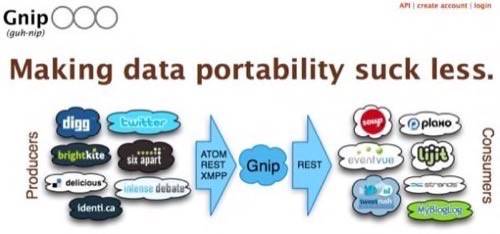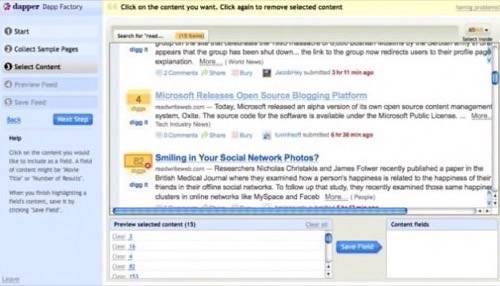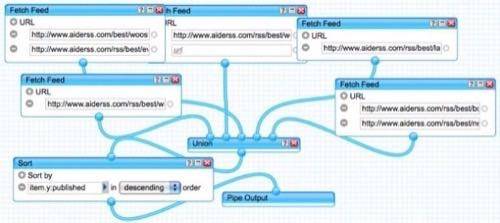RSS and syndication are the veins that the new social web flows through. Countless products and services have been built on top of RSS in the past few years but there are always a few that stand above the rest.

As part of this year’s Top 10 Products series, we offer below the Top 10 RSS and Syndication Products of 2008. These are the feed tools we and the people we know use day in and day out – we love them, we hate them, we wouldn’t want to work without them.
This is the fourth in our series of top products of 2008:
- Top 10 Semantic Web Products of 2008
- Top 10 International Products of 2008
- Top 10 Consumer Web Apps of 2008

About the Selections
These aren’t all new products from 2008. They are the products in the RSS and syndication world that we think made the biggest impact or were the most useful.
To be honest, this was not a particularly good year for innovation in the RSS space. Too many of the products listed below are incumbents, several of which drove us crazy this year. They remain on the list, however, because they are incredibly useful and nothing topped them.
Some honorable mentions are deserved as well. We talked to many people who like RSS magazine-style start page Feedly, though we found it overly constrictive and don’t feel that it’s made a big market splash yet. We also found the Associated Press’s AP Member Marketplace very interesting. Had we gotten a chance to get to know it better, it could very well have been on this list. Finally, we love African social media aggregator Afrigator – it’s a great way to learn about what’s happening all over the continent and it’s a great use of RSS. We named it one of the Top 10 International Products of 2008 but we think it deserves an honorable mention in this category as well.
And Now the RWW Top 10 RSS and Syndication Products of 2008
Postrank
Formerly known as AideRSS, Postrank is simply the most useful RSS related application we’ve seen in a long time. Plug in any RSS feed and Postrank will rate each item in the feed on a scale of 1 to 10, by number of comments, inbound links, saves in Delicious, etc. You can then subscribe to a filtered feed of just the 10% most popular items in that feed.

We use Postrank all the time, in all kinds of contexts: from monitoring break-out stories in niche markets we don’t follow closely, to finding out about the bread and butter of new blogs we discover to running search feeds through Postrank to surface hot conversations on any topic.
Postrank has been around for about a year and a half, but we write about it over and over again.
This year Postrank opened an API, made a bunch of deals with other companies, improved its service, raised a round of funding and just generally rocked.
FriendFeed
Social “life streaming” service FriendFeed is making syndication a more social activity than anything else has yet. The service aggregates your activity data from all around the web, lets your friends comment on it and shows you the activities of all your friends’ friends when someone you know comments on something and exposes it to their network.
If RSS readers will change your life and work through their awesome usefulness, FriendFeed is a service that makes syndication fun. It’s one of the first places we go on the web every morning.

We interviewed the ex-Googlers who founded FriendFeed last February and that interview is still the best place to learn how the service works under the hood.
If you’d like to connect with the ReadWriteWeb crew on FriendFeed (and we hope you will) we’ve posted a tour of our FriendFeed profile pages here. Please join us also in the ReadWriteWeb FriendFeed Room.
Gnip
Gnip is a social media ping server, a service that other services ask for user data updates from all around the web. There’s nothing here for users, but almost every developer we talk to these days who is aggregating content in order to add value to it (and that is the name of the game) has Gnip on its radar. The company aims to make aggregation more timely, scalable and efficient than it is today.
We wrote about Gnip at length when the service launched in July.

Snackr
Snackr is a simple little RSS ticker built in Adobe AIR. Its frenetic and unstopping delivery of news is too much for many people, but the rest of us love it. It’s where our eyes wander during page loads and other down times. Many of the stories you read here at ReadWriteWeb were based on things we first caught wind of through Snackr.

Snackr was built in-house at Adobe by Flex team member Narciso Jaramillo. We reviewed it in May and have been using it ever since.
Google Reader
Google Reader is the market leader in full featured RSS readers, having pulled ahead of the troubled Bloglines in recent months. This year Google Reader has made their sharing feature much more transparent, added the ability to translate any feed into a number of different languages and recently redesigned.
It hasn’t been a super exciting year for the product, and there are still basic problems like very infrequent caching of rare feeds, but Google Reader’s incredible dominance in the field makes it a required part of this list.
Google Reader RSS Subscriber Count Greasemonkey Script
One of the simplest little changes we’ve made to our browsers lately is the addition of this greasemonkey script that shows the number of readers in Google Reader that any page’s RSS feed has. You can usually multiply that number by 2 to 4 times for an estimate of how many total readers a feed has across all readers, but either way it’s a great little indication of a site’s popularity.

The script was written by an anonymous user named “uncv” and we’d like to thank them. We love what they’ve done! This was one of the 7 coolest browser tweaks from the last month that we wrote about earlier this week. It’s already won a permanent place in our hearts!
Dapper
Dapper.net is a point and click interface for data extraction – a nice way to say scraping an RSS feed. We continue to depend on Dapper for all kinds of research, we’re always finding new ways to use it around here. We love it.

Unfortunately, some sites don’t like us to have access to links back to them available in our RSS readers (like Facebook, for example) and that really upsets us. In many cases those feeds that we created ourselves are the only way we’d be drawn back to a site, so it’s their loss as much as ours.
Dapper has been around since 2006, but they recently launched a semantic ad platform that we included in our list of the top 10 semantic web products of 2008.
Twitterfeed
Love it or hate it, Twitterfeed has made a big impact on the web in 2008. It’s the service people use to publish an RSS feed right into Twitter.

Some people argue that twitter is all about conversation and that publishing an RSS feed there is grating and inappropriate. We like getting our local newspaper story links on Twitter, though, and everything from disaster monitoring to traffic conditions are now available via Twitterfeed.
Feedburner
Google’s RSS publishing service Feedburner hurt our ability to break news first, can’t be used in many corporate environments because it gets blocked in China and only made 6 posts all year to its company blog, none since May. That’s compared to 28 posts in 2007. Apparently once you get your Google money there’s not much point in communicating with the people who depend on you every day.
Why would we call Feedburner one of the top 10 RSS products on the year then? Because despite how frustrating it can be, the service is still so incredibly useful that we don’t know what we’d do without it. Not just for publishing and analytics for ReadWriteWeb feeds – from numbers to email delivery to FeedFlare links, Feedburner will work magic easily on any feed you work with. I’ve got 68 different feeds in my account and I’ll probably publish several more before the year is up.
Pipes
Yahoo! Pipes is another RSS based service that is really frustrating, hasn’t innovated substantially in the last year – but is still so powerfully useful that it deserves a spot as one of the top products in this market.
Splicing and filtering RSS feeds is the simplest thing to do with Pipes, but there’s much more you can do with it as well. It’s great for us pseudo-geeks, we can work all kinds of magic with it. We’ve used Pipes throughout the year to do things that we (ok I) don’t have the technical chops to do otherwise. For that I thank the Pipes team a whole lot.

Those Were Our Favorites This Year – How About You?
Did we miss anyone you think should have been on this list? We hope you’ll share your favorites in comments below. What RSS and syndication products impacted you the most in 2008?










